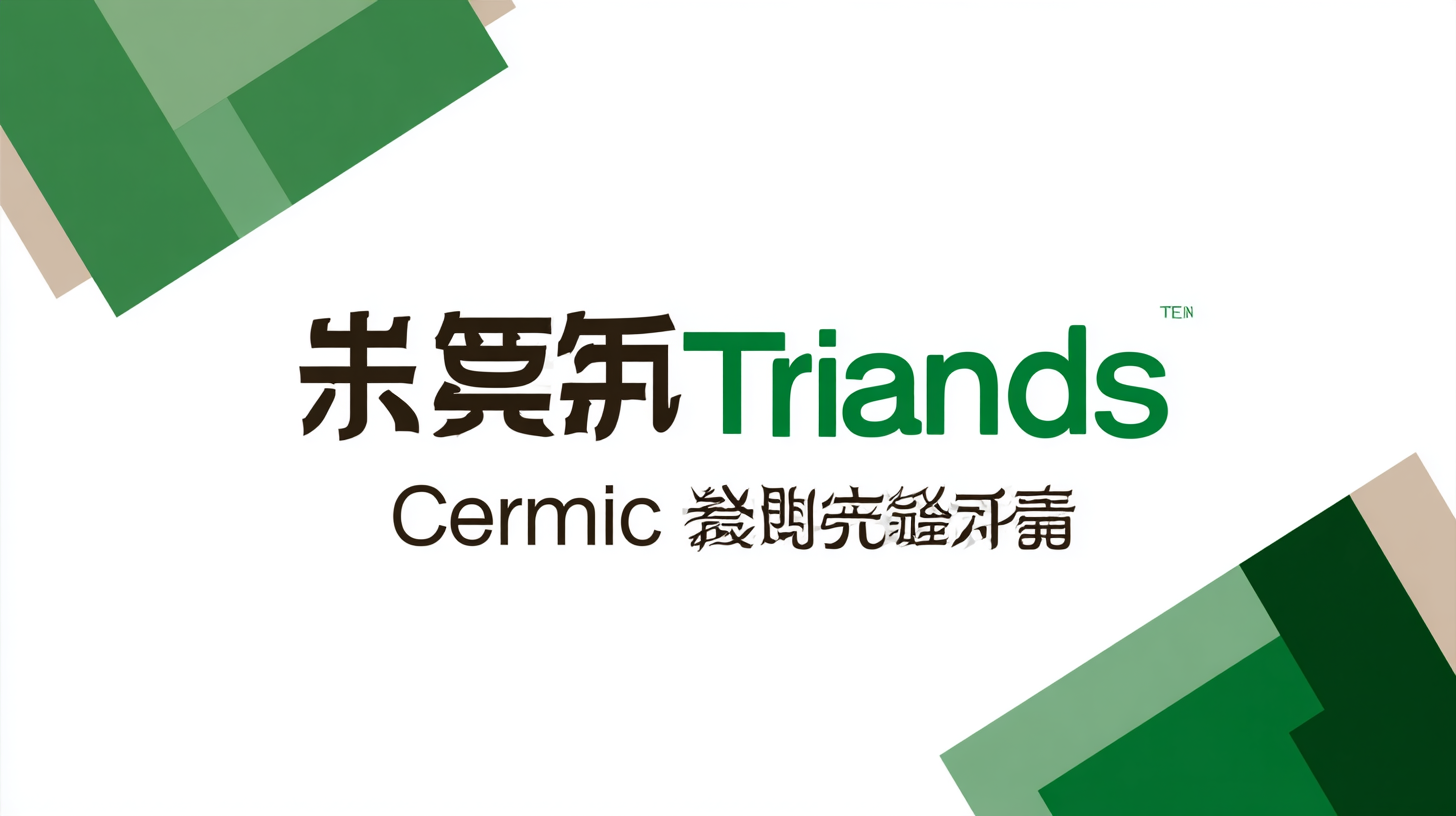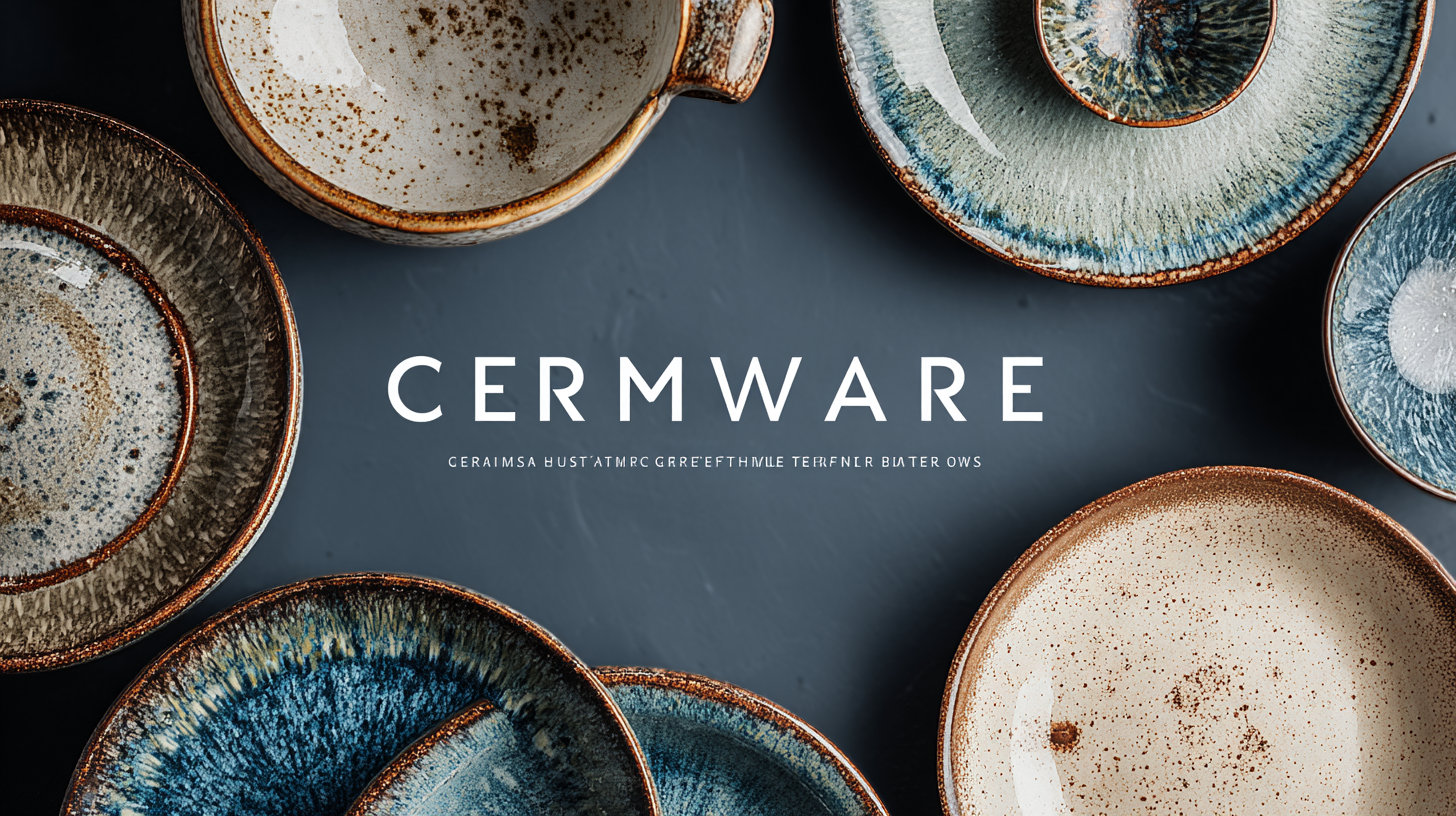

 As we look ahead to 2025, the landscape of the ceramic tableware market is poised for significant transformation, driven by evolving consumer preferences and innovative manufacturing techniques. According to a report by Grand View Research, the global ceramic tableware market is expected to reach USD 16.62 billion by 2025, growing at a compound annual growth rate (CAGR) of 4.5% from 2019 to 2025. This growth is largely fueled by the rising demand for environmentally friendly and aesthetically pleasing dining products. With China emerging as a leading hub for high-quality ceramic manufacturing, global buyers are increasingly seeking partnerships with top-tier factories that offer both durability and design innovation. Understanding these market trends will be crucial for buyers aiming to stay competitive in the ever-evolving culinary landscape, ensuring they can meet the diverse tastes and preferences of consumers worldwide.
As we look ahead to 2025, the landscape of the ceramic tableware market is poised for significant transformation, driven by evolving consumer preferences and innovative manufacturing techniques. According to a report by Grand View Research, the global ceramic tableware market is expected to reach USD 16.62 billion by 2025, growing at a compound annual growth rate (CAGR) of 4.5% from 2019 to 2025. This growth is largely fueled by the rising demand for environmentally friendly and aesthetically pleasing dining products. With China emerging as a leading hub for high-quality ceramic manufacturing, global buyers are increasingly seeking partnerships with top-tier factories that offer both durability and design innovation. Understanding these market trends will be crucial for buyers aiming to stay competitive in the ever-evolving culinary landscape, ensuring they can meet the diverse tastes and preferences of consumers worldwide.
As the demand for sustainability grows, the ceramic tableware industry is witnessing a significant shift towards emerging materials that prioritize eco-friendliness. According to a recent report by ResearchAndMarkets, the global ceramic tableware market is projected to reach $25 billion by 2025, driven by consumer preferences for sustainable products. This trend is leading manufacturers to explore innovative materials, such as recycled clay and bio-based ceramics, offering not only durability but also a reduced environmental footprint.
One notable advancement in this space is the use of waste materials in ceramic production. A study from the International Journal of Environmental Science disclosed that incorporating recycled glass into ceramic formulations can reduce energy consumption by up to 30%, significantly lowering carbon emissions during manufacturing. Additionally, the surge in popularity for ethically sourced products means that companies are now more committed than ever to transparency in their supply chains, ensuring that materials are responsibly sourced and processed. These sustainable alternatives are not just a trend; they represent a fundamental shift in the approach to ceramic tableware, meeting the growing expectations of global consumers for more responsible and environmentally friendly options.

The ceramic tableware market is undergoing a significant transformation, with eco-friendly designs taking center stage. According to a recent report by Grand View Research, the global ceramic tableware market is projected to reach $74.29 billion by 2025, driven largely by consumer preference for sustainable products. With growing awareness about environmental issues, buyers are increasingly seeking tableware that not only looks good but also aligns with their values of sustainability and responsible consumption.
In 2025, functional aesthetics in ceramic tableware will be pivotal. Designers are focusing on creating products that feature organic shapes and natural finishes, which resonate more with eco-conscious consumers. For instance, the use of lead-free glazes and locally sourced materials is on the rise. A survey from the National Association of Home Furnishings noted that 67% of consumers are willing to pay more for items that represent a commitment to sustainability. As functionality meets beauty in these innovative designs, the emphasis on eco-friendly ceramic tableware will redefine dining experiences, appealing to both discerning buyers and the planet.
The landscape of ceramic tableware is undergoing a significant transformation as consumer preferences evolve. In recent years, buyers have shown a growing interest in non-traditional ceramic alternatives that prioritize sustainability, unique aesthetics, and versatility. This shift is driven by an increasing awareness of environmental issues, prompting consumers to seek products made from eco-friendly materials and manufacturing processes. As a result, brands are innovating their offerings to incorporate recycled materials and organic glazes, appealing to the eco-conscious market.

Moreover, the rise of personal expression in dining experiences has led to a demand for more unconventional shapes, colors, and textures in ceramic tableware. Instead of opting for standardized designs, consumers are now gravitating towards artisanal pieces that reflect their individuality and lifestyle choices. This trend not only enhances dining aesthetics but also supports small artisans and local manufacturers, fostering a sense of community and craftsmanship. As these preferences continue to shape market dynamics, ceramic tableware brands must adapt and innovate to remain relevant in an increasingly competitive landscape.
The realm of ceramic tableware is witnessing a profound transformation, driven significantly by global influences that shape consumer preferences and production techniques. A report by MarketsandMarkets projects that the global tableware market will reach approximately $72 billion by 2025, with ceramic tableware comprising a substantial segment of this growth. As international markets continue to merge and diversify, the aesthetic and functional aspects of ceramic products are being redefined. Buyers are increasingly leaning towards designs that reflect cultural trends, sustainability, and functionality, prompting manufacturers to innovate continuously.
Moreover, the rise of e-commerce and social media has made it easier for global brands to penetrate local markets, leading to a confluence of styles and tastes. For instance, the influence of Scandinavian minimalism is reshaping the aesthetic of ceramic dinnerware, while traditional Asian designs inspire new color palettes and textures. According to a 2023 design trends report by Euromonitor International, 48% of consumers are prioritizing eco-friendly materials and manufacturing methods, indicating a shift towards sustainable practices in the creation of ceramic tableware. This blending of global influences not only caters to a diverse customer base but also pushes the boundaries of traditional ceramic artistry, steering the industry into a future rich with innovation and cross-cultural expression.
| Trend | Description | Consumer Region | Market Growth (%) | Sustainability Impact |
|---|---|---|---|---|
| Minimalist Designs | Sleek, uncluttered tableware featuring simple lines and muted colors. | North America | 15% | Low impact due to reduced material use. |
| Handcrafted Appeal | Unique, artisanal pieces favored for their distinctiveness and character. | Europe | 20% | Promotes local artisanship and reduces mass production waste. |
| Eco-Friendly Materials | Increased use of sustainable materials such as recycled clay and natural glazes. | Asia-Pacific | 25% | High positive impact with reduced environmental footprint. |
| Cultural Inspirations | Designs influenced by traditional crafts and global artistic trends. | Latin America | 18% | Moderate impact; promotes cultural heritage and diversity. |
| Smart Tableware | Integration of technology for tracking food and beverage consumption. | Global | 30% | Low impact but enhances user experience and reduces waste. |
As we look ahead to 2025, the ceramic tableware market is poised for significant innovation, driven by increasing consumer demand for safe and sustainable options. A recent report indicates that the global ceramic tableware market is projected to reach approximately $25 billion by 2025, with a compound annual growth rate (CAGR) of 5.5% from 2020 to 2025. This growth is largely fueled by the rising awareness of the health implications associated with cookware materials, particularly the push for PFAS-free products. As more buyers prioritize non-toxic materials, manufacturers are responding with a diverse range of ceramic options that meet these safety standards.
In terms of innovations, the introduction of advanced glazing techniques promises to enhance both the aesthetic and functional qualities of ceramic tableware. Companies are now utilizing high-tech coatings that not only increase durability but also ensure resistance to scratches and stains. Industry analysts have noted that nearly 40% of consumers are willing to pay a premium for environmentally friendly ceramic products, highlighting a shift towards materials that are both safe for food contact and sustainable. As these trends evolve, global buyers will find an expanding array of options that blend safety, performance, and design in the ceramic tableware market.
